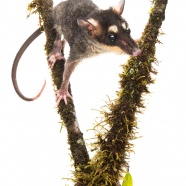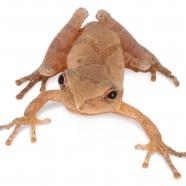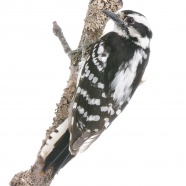Taking Time for Turtles
The weather is finally warming up in the northeast and the first basking turtles are out. Soon they will start moving towards favorite wetlands or preferred egg-laying sites, risking their lives as they cross our roads. Please slow down and avoid hitting these animals – no matter how tough they may appear, they are no match for a fast moving car. Even straddling a turtle with your wheels will often cause it to hit the underside of your car if you’re moving at a decent clip. Please stop, if you can safely do so, and gently help the turtle cross in the direction it is headed. Many...
Read MoreGolden-winged Warbler
Without a doubt, one of the highlights of our recent work in Costa Rica was the recapture of this Golden-winged Warbler, which was banded last year in the same area it was caught this year, near Rara Avis Rainforest Lodge. Since we last saw it in March of 2016, it undoubtedly traveled back to its breeding grounds somewhere in North America and hopefully managed to find a mate of its own species. Golden-winged Warblers are suffering from dramatic declines throughout their range, and are increasingly hybridizing with closely-related Blue-winged Warblers. As a result, this species is at serious...
Read MoreGray Four-eyed Opossum
This is a young Gray Four-eyed Opossum (Philander opossum) caught in one of our mammal traps, as we were surveying for an unusual jungle rodent called Watson’s Climbing Rat (Tylomys watsoni) in Rara Avis Nature Reserve, Costa Rica. Believe it or not, the rat would have been bigger than this opossum (and particularly fond of chocolate and soap). Like it’s cousin, the Virginia Opossum, these guys show a remarkable resistance to venoms and poisons, including snake venom, and are relatively immune to dangerous snake bites. In North America, opossums have been credited with being a biological...
Read MoreSpring Peepers
Spring Peepers are a type of small tree frog. Truthful to their name, they emerge from hibernation in early spring. Soon after, the males – often hundreds at a time – will take over wetlands and call on warm and rainy nights to stake out a territory and attract a mate. Their surprisingly loud “peep” calls are usually produced from a safe location hidden in dense vegetation, and it can be difficult to spot them. An inflatable vocal sac on their throat serves as an amplifier, which allows them to call very loudly. The sound produced by a chorus of these inch-long frogs can be truly deafening...
Read MoreDowny Woodpecker
The Downy Woodpecker (Picoides pubescens) is an industrious little bird that frequents parks and woodlots throughout much of North America. While often spotted at backyard feeders with similarly sized chickadees and nuthatches, this black-and-white woodpecker is also at home on tiny branches where it can be seen acrobatically foraging for insect larvae. Roger Tory Peterson described this bird’s call as “a rapid whinny of notes, descending in pitch.” Keep an eye and an ear out for this charismatic little bird; its striking plumage, shrill song and tree-trunk tapping should...
Read More








